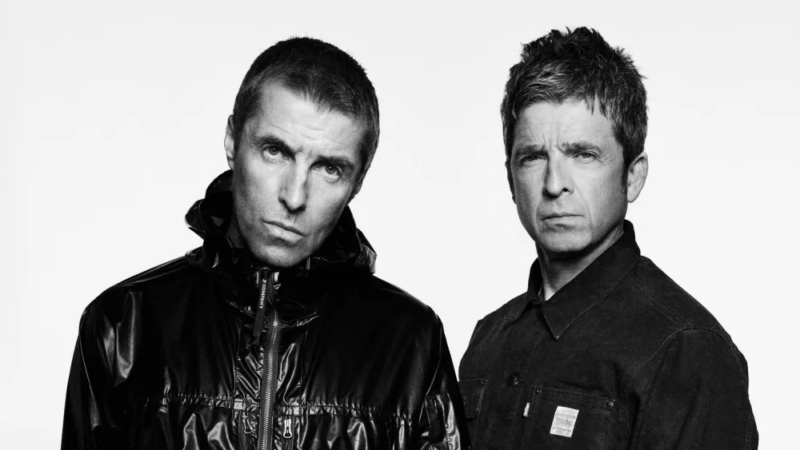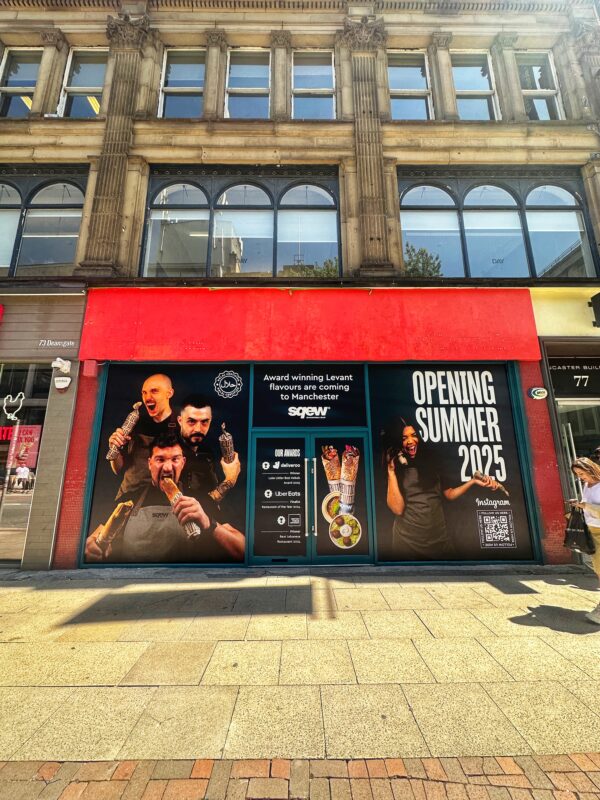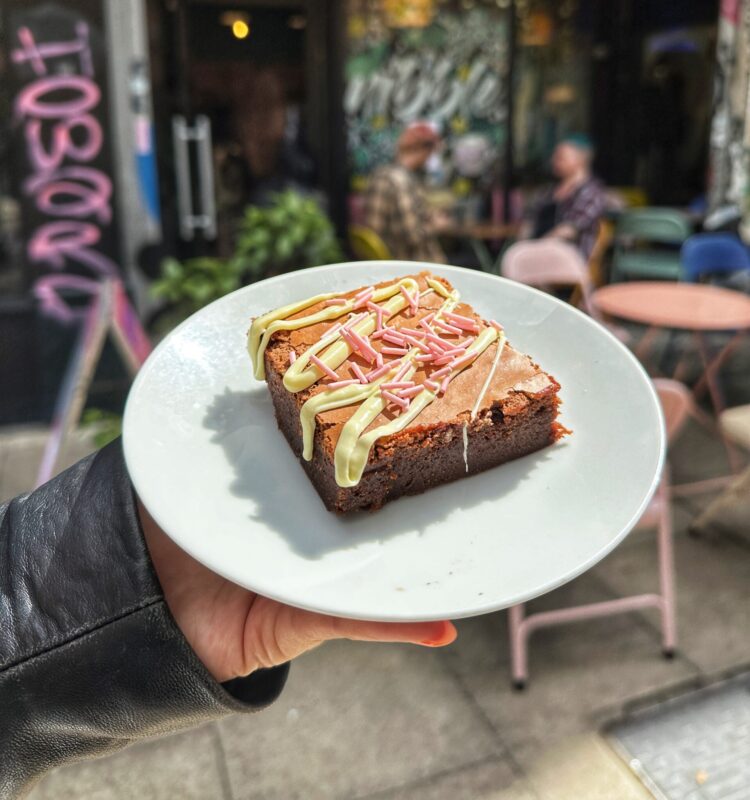Trending
B of the Bang: The story of the infamous East Manchester eyesore
The spiky sculpture remains as polarising as ever, even eight years after it met its demise.

Mention ‘B of the Bang‘ to Mancunians, and you’ll probably wish you hadn’t.
Even to this day, the infamous 00s East Manchester sculpture – designed to look like an exploding firework – still manages to have people rolling their eyes, generate heated discussions, prompt a wide range of responses, and remain as polarising as ever before, despite eight years having passed since it was finally dismantled for good.
Alongside the constant critique and ongoing debate surrounding its place and purpose in the city over the five years it was erected for, B of the Bang was given a slew of nicknames by residents and was branded by many as an eyesore.
It also seemed to enjoy much of its life as the butt of many a local gag.
But what was B of the Bang really about?
What was it for? What inspired its creation? Why did it call Manchester home? Why was it so controversial and problematic? Why did people seem to have so much to say about it? And what actually happened to it in the end?
Well, it all started with a simple quote.
Taking its name from a quotation by British sprinter Linford Christie, in which he said that he started his races not merely at the “bang” of the starting pistol, but at “the B of the Bang”, B of the Bang B was a sculpture created by Thomas Heatherwick – often deemed one of Britain’s most significant designers – that was commissioned to commemorate the 2002 Commonwealth Games held in the city, and was installed at Sportcity next to the City of Manchester Stadium (Etihad Stadium) in the East Manchester area of Beswick, at the corner of Alan Turing Way and Ashton New Road.
The sculpture was first commissioned by New East Manchester Limited in 2003, but construction overran – largely due to a rather optimistic estimated completion date – and the official unveiling was delayed until 12th January 2005.
Being taller and leaning at a greater angle than the Leaning Tower of Pisa, B of the Bang B was one of the tallest structures in Manchester, and was even confirmed to be the tallest sculpture in the UK right up until the completion of Aspire in Nottingham in 2008.
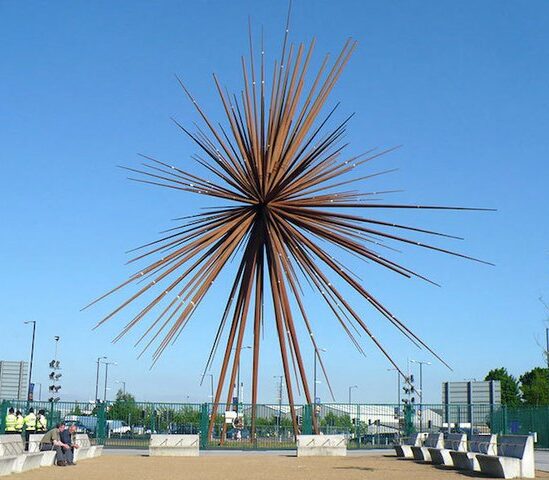
B of the Bang originally stood 56 metres (184 ft) tall, with 180 hollow tapered steel columns – or spikes – radiating from a central core. It was angled at 30 degrees and supported by five 25 m (82 ft) long, tapered steel legs, which connected to the spikes 22 m (72 ft) above the ground.
The sculpture weighed 165 tonnes, with the concrete in the foundations weighing over 1,000 tonnes, including a 400 m2 (4,300 sq ft) reinforced concrete slab.
In contradiction to its eventual fate, the sculpture was built to last, having been made from the same weathering steal as the iconic Angel of the North sculpture, which gradually develops a tightly-adhering oxide layer as it’s exposed to the elements, and this layer inhibits further corrosion by reducing its permeability to water.
As part of the design, the spikes even swayed slightly in the wind in order to withstand gusts in excess of 100 mph (160 km/h).
As well as being constructed to tackle the inevitable Manchester elements, it seems that B of the Bang was also built with a legacy in mind, as at the time of its construction, a time capsule was even placed inside one of the spikes of the sculpture – containing children’s poems and paintings – which was due to be opened circa 2300, but after being dismantled, the location of this time capsule is currently unknown.
The sculpture cost £1.42 million in total to design and construct.
This actually ended up being twice the original estimate, as the initial costing plan had neglected to include installation costs.
Funding for the sculpture was sourced from a European Regional Development Fund contribution of £700,000, the North West Development Agency contributing £500,000, and Manchester City Council providing the final £120,000 towards its completion.
Its hefty price tag was only the tip of the controversy it generated over the years though.
Only six days before the sculpture’s official unveiling, the tip of one of the 2.1 m (6.9 ft) spikes detached and fell, but after close inspection, the launch event went ahead as planned.
Four months later, in May 2005, a second spike had to be cut off by firefighters after it was discovered hanging loose, and at that time, the sculpture was closed off to the public, and the junction and pathway near the sculpture were temporarily closed.
As a result, some of the joints were re-welded, with equipment put in place to prevent excessive movement.
Despite these modifications though, B of the Bang remained fenced off.
After ongoing and worsening concerns, in May 2006, a total of nine spikes were removed from the sculpture and taken away for metallurgical analysis to discover the stresses being placed on the steel, but all of that meant nothing after it was announced in October 2007 that Manchester City Council were taking legal action against the makers of the sculpture, with the aim of completing the necessary repairs to the sculpture.
This resulted in an out-of-court settlement totalling £1.7 million in damages for breach of contract and negligence.
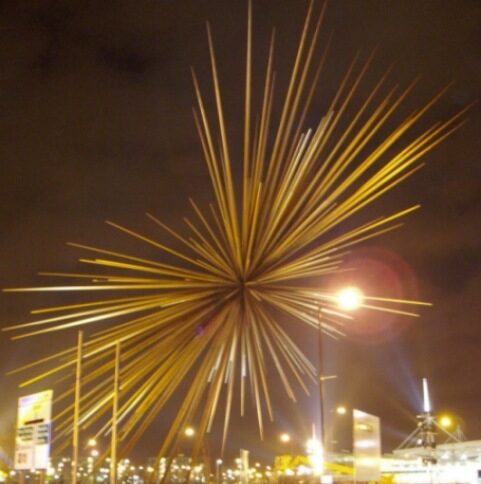
Following the publishing of an investigative report into the sculpture in 2009, Manchester City Council recommended that B of the Bang should be dismantled and placed in storage until funds could be raised for its safe reinstatement.
Several possibilities for the future of the sculpture were posed, but the report underlined the necessity for extensive testing to ensure these were safe first.
Despite a number of pleas to keep the sculpture erected – including from revered artist Anthony Gormley, who spoke out in its support, stating that: “It is a great tribute to Manchester that this groundbreaking work was commissioned [and] to allow it to disappear would be a loss not just of an inspirational artwork but also of the council’s nerve – removal of B of the Bang began in April 2009.
Although the council had originally promised to store the complex central core and legs, these too were cut apart during removal, which casted further doubt on future prospects for the landmark sculpture’s return at the time, and in early July 2012, the core was finally sold as scrap for £17,000.
But even though B of the Bang eventually fizzled out before its time, it’s hard to deny it made its mark on the city of Manchester.
Just perhaps not in the way it was originally intended.
Featured Image – Wikimedia Commons






